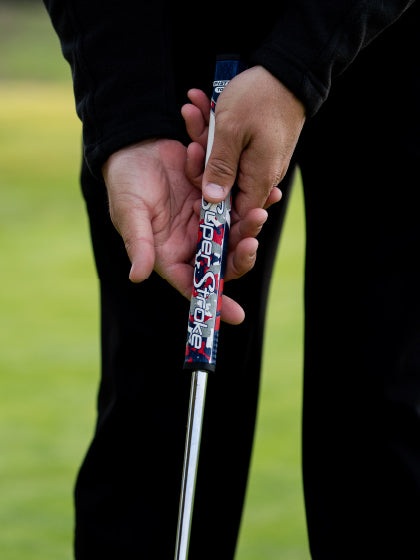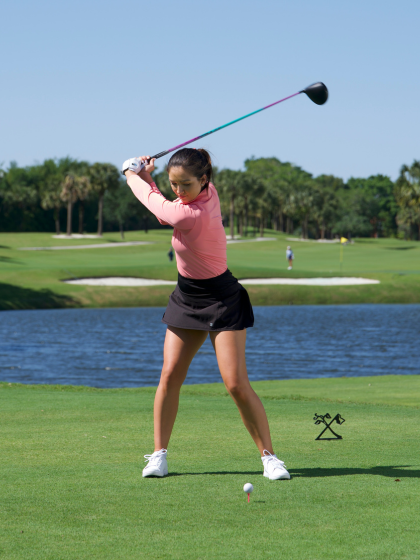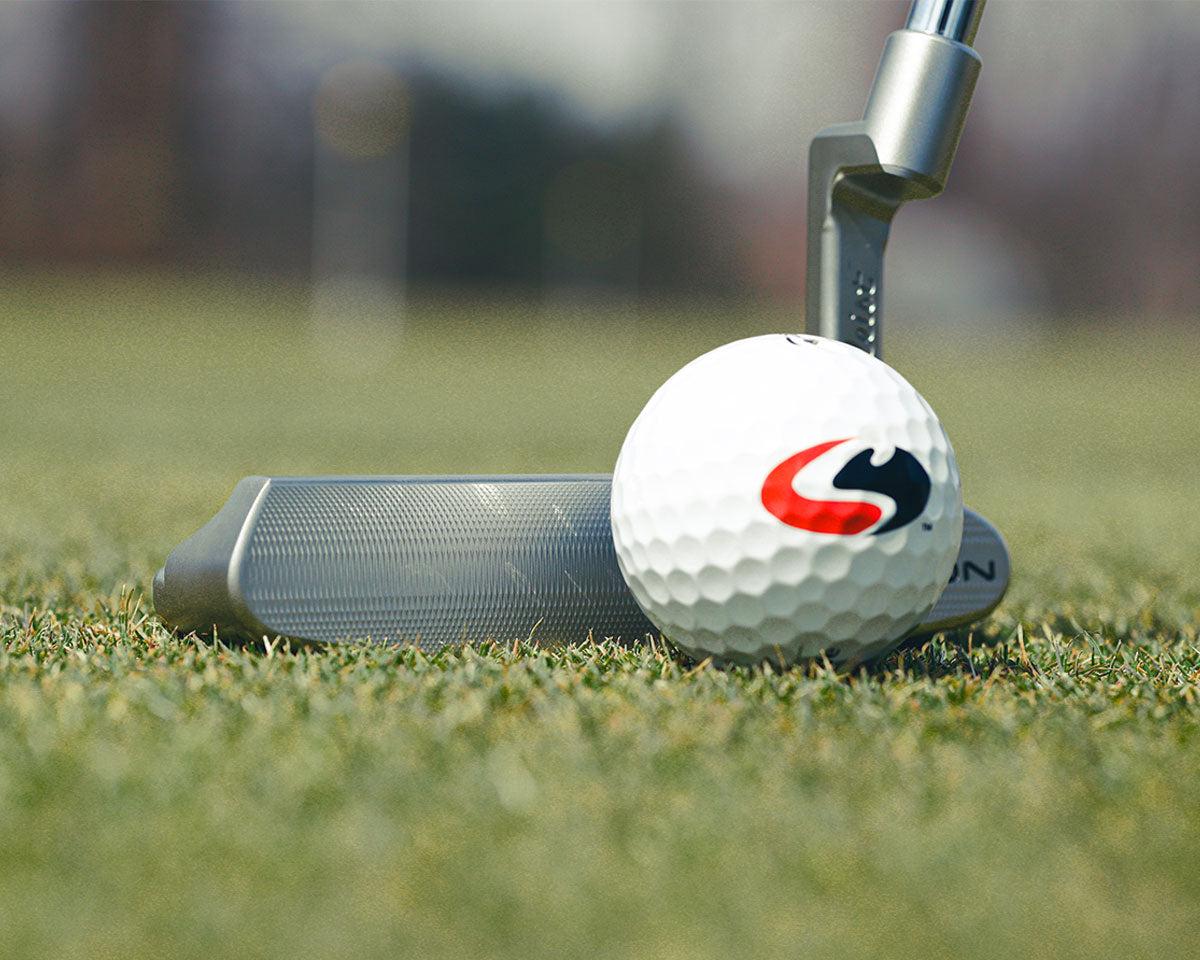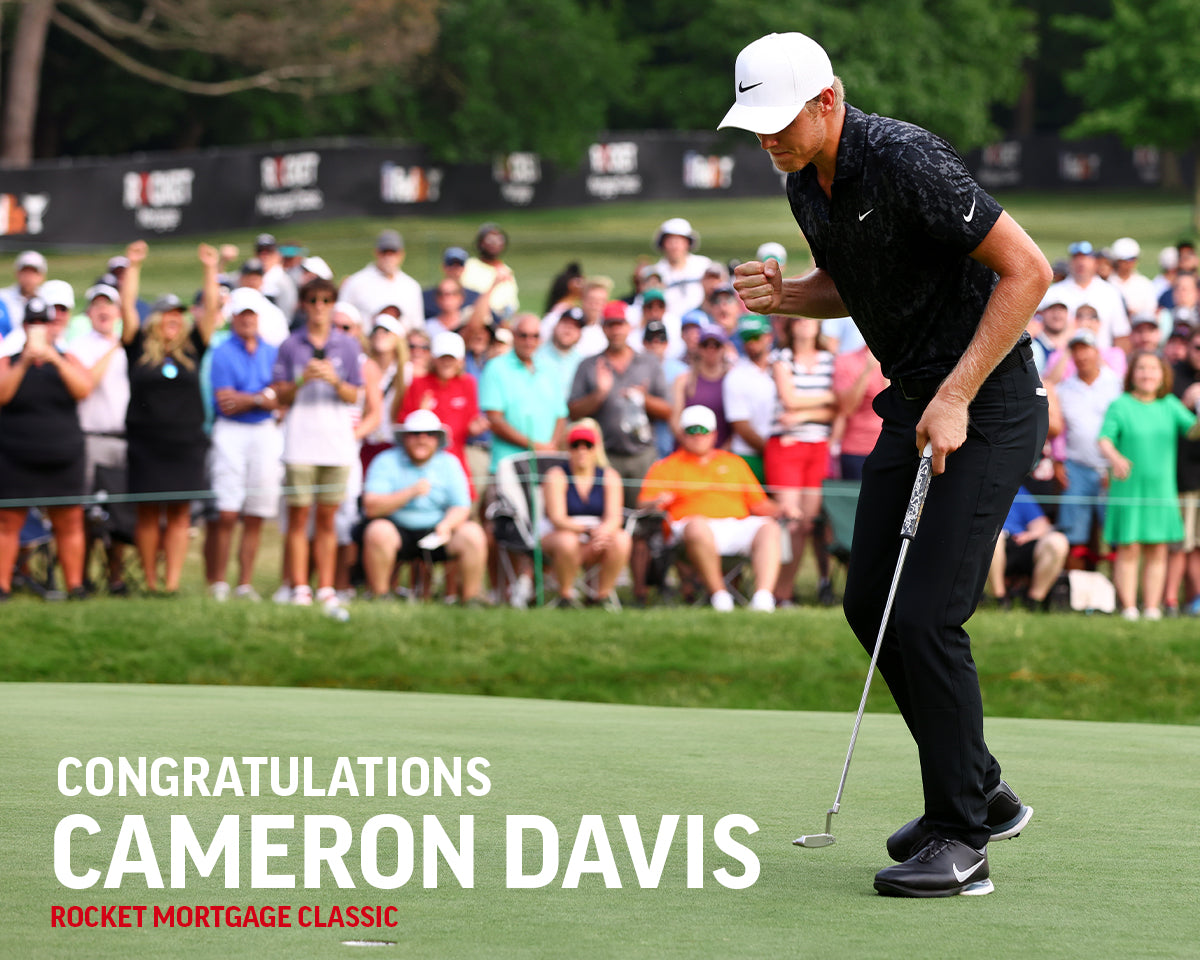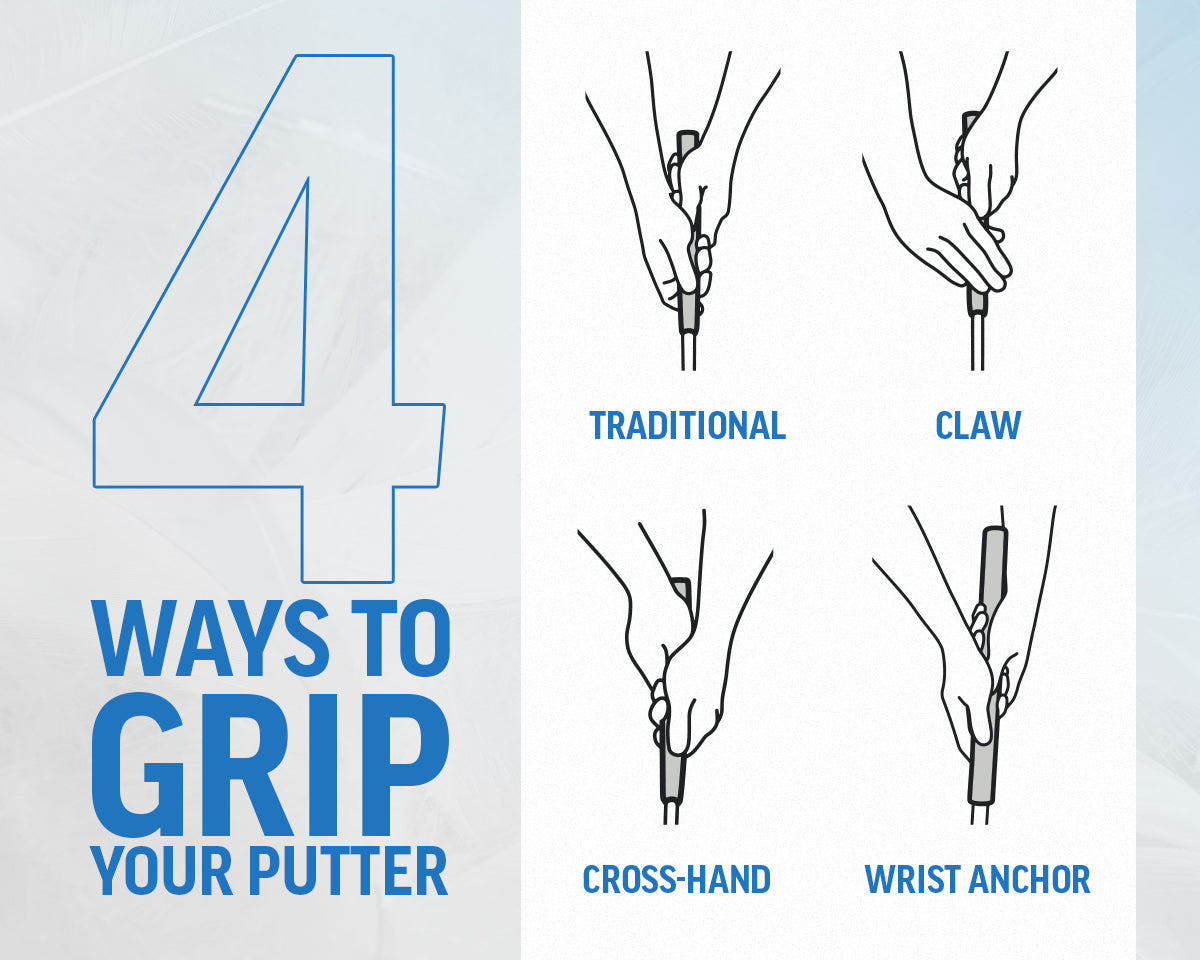Not so long ago, picking a new putter was pretty simple. If you liked the way a putter looked and felt, you were good to go.
Looks and feel are still important, of course. But putters have gotten much more sophisticated lately and, thanks to technology, we know a lot more about what success on the greens requires.
For example: Studies show that approximately 90% of a putt’s starting direction is determined by the club face angle at impact. That makes it crucial to find a putter you can align properly and square up at impact, and subjective matters like look and feel have little to do with that.
Let’s run down some of the key factors to consider when shopping for a new putter.
How to Choose a Putter: Shape and Size
The first things to consider when choosing a putter are parts of the putter’s design: the shape of the putter head, size of the grip and length of the shaft. Different shapes and sizes of these parts of the putter will give you slightly different performances and feels. If you aren’t sure which shape you prefer, take a look at some of the most common design elements and how they impact putts.
Face Balanced vs. Toe Hang Putters
Face balanced and toe hang putters are the two basic putter types. Here’s how to tell the difference between the two:
Place the putter on a countertop or table, with the clubhead hanging off the edge. What is a toe hang on a putter, you may ask? If the toe points down to any degree, it’s a toe hang putter. How can you tell if a putter is face balanced? If the face points straight up, it’s a face balanced putter.
But how does toe hang affect putting? And which type is best for you?
There actually is a right answer to the question of toe hang putter vs. face balanced based on the way you putt.
Conventional wisdom holds that a toe hang putter is easier to release, or turn from open to square at impact. But SuperStroke’s resident putting guru, Phil Kenyon, says not so fast.
“The reality is very different,” he maintains. “If you look at the physics of that (toe hang) club, the toe is more likely to lag behind on the downswing than that of a face balanced putter.”
Kenyon explains that if you tend to push your putts, a toe hang putter might make the problem worse. If you tend to pull the ball, then toe hang could help and pulling putts left with toe hang putters isn’t very common.
Therefore, the best putter to stop pushing putts is a face balanced putter. Pushing putts with a face balanced putter isn’t likely to happen as much as with a toe hang putter.
Now that you know the difference between face balanced putters and toe hang putters, you can make the right decision based on whether you tend to push or pull the ball when you putt.
Blade vs. Mallet Putter
This goes hand-in-hand with the previous factor of how to check if a putter is face balanced; blade-style putters usually have some toe hang, while mallets are often face balanced.
It’s also important to consider that mallets are generally more forgiving on miss-hits. If you strike the sweet spot consistently, you might prefer the blade style.
Putter Grip Size and Shape
Here’s a major element where golfers of yesteryear had few options. Putter grips were essentially uniform in size, with most in the “pistol” shape.
Now, there are multiple grip sizes, and while the pistol style remains most popular, it’s far from the only choice.
We recently covered choosing putter grips in-depth with Phil Kenyon, who noted that most golfers will benefit from putter grips that limit hand and wrist movement as much as possible. Also, knowing about putter grip styles and how you grip the putter can play a part in picking the right grip because it will inform how you will clutch the putter.
Sometimes already knowing the best putter grip for your putting grip style can help you narrow down options when choosing a putter.
Our fitting tool for golf grips is a great resource if you haven’t settled on a specific model; it takes just seconds to fill out and get a recommendation for golf grips and/or putter grips.
Putter Length
A putter that’s too long or short will not only feel awkward at address, but it could also negatively impact your alignment and stroke.
While getting a professional fitting is the best way to assure your putter is the right length, here’s a simple way to test for yourself (though you might need someone to help measure):
- Set up as you normally do, but with the putter leaning against your body; make sure your eyes are directly above the golf ball.
- Keep your arms relaxed and hanging straight down from your shoulders.
- Grip the putter and place it behind the ball.
- The proper length will be from one-half inch above your top hand to the middle of the club’s sole.
Get this right and you’ve taken a huge step in finding your perfect putter.
How to Choose a Putter: Alignment, Sound and Feel
Choosing a putter isn’t just about how the putter looks and feels, but whether it sets you up for success by allowing you to start on line and give you the right feel as you attempt short and long putts. Here are some things to consider when evaluating a putter in these areas.
Putter Alignment Aids
Did we mention that face angle at impact accounts for about 90% of a putt’s starting line?
That’s why alignment is so important. Recognizing this, putter manufacturers have developed more and more advanced alignment guides on top of the club.
Some golfers like an elaborate, multi-line aid. Others find these guides distracting and prefer something simpler, like a single-line guide – or none at all.
Experiment with different alignment aids to determine what works best for you. If you get fitted for a putter, the expert can also help you find the best alignment guide for your putter.
Putter Sound and Feel
This is one aspect that isn’t entirely subjective. In fact, a putter’s sound and feel can affect your distance control.
These factors also vary pretty widely based on a putter’s face material and surface – for instance, some are perfectly flat while others feature milled grooves. Many putters are fitted with face inserts; some create a soft “thump” at impact, while others are more “clicky” or metallic.
Your best bet is to try putters with several different face materials and surfaces, practicing from short, medium and long distance.
Now that you know how to check if a putter is toe hang vs. face balanced and the best putter to stop pushing putts, you’re in a good position to go out and try out some putters. Of course, if you’re really serious about your putting, a professional fitting is definitely the way to go.

